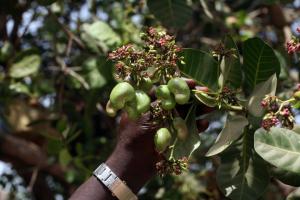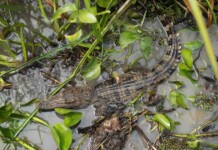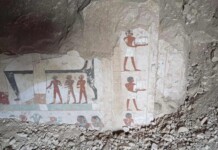 For 35 years, hundreds of villagers living in northern Guinea-Bissau have been too scared to cultivate the land around their villages for fear of exploding landmines.
For 35 years, hundreds of villagers living in northern Guinea-Bissau have been too scared to cultivate the land around their villages for fear of exploding landmines.
Their town of Suar in the Cacheu region, near the northern border with Senegal, was contaminated by landmines and unexploded ordnance laid by the Portuguese in the 1974 liberation war.
“The area was not safe,” Daniel Camara, 28, said as he cycled along a path once surrounded by mines. “But now we can move around. We are no longer living in fear – they’ve taken our bad luck away.” (Cashew fruits in Guinea-Bissau ©Manoocher Deghati/IRIN)
Since July, HUMAID, an international NGO, has cleared three-quarters of the 98,000 sqm of contaminated land, finding 21 landmines, plus several unexploded ordnances.
“This was nothing like the concentrations of mines we found left over from conflict in the capital Bissau and Buruntuma [in the east],” John Blacken, founder of HUMAID and ex-US ambassador to Guinea-Bissau, told IRIN, “but nonetheless the area is not safe until every mine is gone.”
Most of the inhabitants of Suar and Bintam villages fled during the war, returning afterwards to cultivate their crops. After one death, two injuries and the deaths of 150 cattle, they formed teams to search for mines, removing 250, according to Bintam village chief Dan Sucar.
Despite this, many were still too afraid to access their land. “We were not able to grow crops – we brought less food home – it has really affected our lives,” Sucar told IRIN.
These farmers, like 90 percent of Guinea-Bissauans, rely on subsistence agriculture to survive.
As soon as the sections of Suar and Bintam were declared explosive-free, farmers moved back, planting cashew trees, millet, corn and beans within the “mine-free” markers.
Landmines have had a significant effect on agricultural output: the most recent mines laid caused most of the cashew crop to be left unharvested, according to the government.
Land has remained littered with mines for decades since the liberation war ended due to lack of resources. It took the dramatic impact of weekly accidents in the capital, Bissau following the end of the civil war in 1999 to focus attention on the mine problem, he told IRIN.
Since 1999, HUMAID has cleared 16 sites contaminated by mines and ordnances. HUMAID collaborates with the National Coordination Centre for Mine Action (CAMI), the government body in charge of coordinating all demining activities. (IRIN News)



















